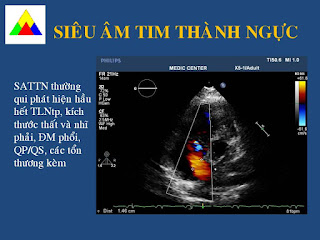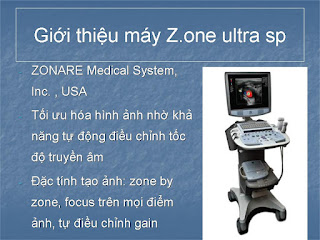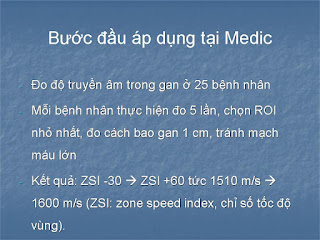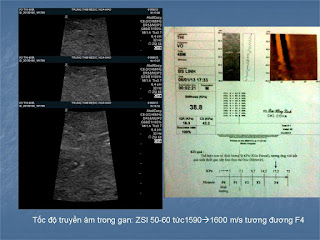Tổng số lượt xem trang
Thứ Bảy, 2 tháng 2, 2013
Thứ Sáu, 1 tháng 2, 2013
INCIDENTAL FOCAL HEPATIC MASS
Findings
CT revealed a hypervascular mass in the sixth segment of the
liver during arterial enhancement (Figure 1a). This lesion exhibited slight
hypointensity on pre-contrast T1 weighted MRI (Figure 2a). The anterior portion
of this lesion demonstrated a similar degree of enhancement to the surrounding liver parenchyma (Figure
2b, arrow), while the posterior portion exhibited reduced enhancement (Figure
2b, arrowhead).
Diagnosis
The patient underwent the right posterior segmentectomy. The
surgical specimen was a well-demarcated, round mass measuring 4.5 cm in diameter (Figure 3a).
Histological diagnosis of both portions was moderately differentiated
hepatocellular carcinoma (HCC). However, the microscopic specimen obtained at the junction of
the tumour consisted of two different subtypes (Figure 3b): pseudoglandular (Figure 3c) and microtrabecular
(Figure 3d). On immunochemical staining, the tumour cells were positive for Glycan, CD13 and CD34, but
negative for AFP and CK19.
Discussion
HCC occurs frequently in patients with chronic liver disease,
which is related with viral hepatitis B and C. Gd-EOB-DTPA is a newly developed hepatocyte-specific agent, which transports into the hepatocyte
through organic anion transporting polypeptides (OATPs) and is excreted
into bile through canalicular multiorganic anion transporters [1, 2]. Because
Gd-EOB-DTPA uptake is usually reduced in HCC cells, this agent may help estimate histological grading [3]. To the best of our knowledge,
there have been few reports of the simultaneous high and low accumulation of Gd-EOB-DTPA in solitary
and moderately differentiated HCC. Recently, it has been proposed that OATP 1B1/3 mediates the uptake of
Gd-EOB-DTPA from sinusoid to tumour, whereas the multidrug resistance-associated protein 2 (MRP2)
mediates the secretion of Gd-EOB-DTPA from tumour to lumen [4].
Although the histological findings of most tumour cells display
some degree of Gd-EOB-DTPA content, HCCs exhibit different levels of enhancement on Gd-EOB-DTPA-enhanced
MRI according to the positive expression of the two transporters. Therefore,
awareness of these properties may contribute to the accurate diagnosis of HCC.
Thứ Năm, 31 tháng 1, 2013
PEDIATRIC and ADOLESCENT BREAST MASSES
OBJECTIVE. Pediatric breast masses are relatively rare and
most are benign. Most are either secondary to normal developmental changes or
neoplastic processes with a relatively benign behavior. To fully understand
pediatric breast disease, it is important to have a firm comprehension of
normal development and of the various tumors that can arise. Physical examination
and targeted history (including family history) are key to appropriate patient
management. When indicated, ultrasound is the imaging modality of choice. The
purpose of this article is to review the benign breast conditions that arise as
part of the spectrum of normal breast development, as well as the usually benign
but neoplastic process that may develop within an otherwise normal breast. Rare
primary carcinomas and metastatic lesions to the pediatric breast will also be
addressed. The associated imaging findings will be reviewed, as well as
treatment strategies for clinical management of the pediatric patient with
signs or symptoms of breast disease.
CONCLUSION. The majority of breast abnormalities in the
pediatric patient are benign, but malignancies do occur. Careful attention to
patient presentation, history, and clinical findings will help guide appropriate
imaging and therapeutic decisions.
VIÊM TÚI MẬT HOẠI TỬ: DẤU HIỆU SIÊU ÂM DÀY VÁCH TÚI MẬT và TĂNG BẠCH CẦU
OBJECTIVE. The purpose of our study was to determine, first,
if gallbladder wall striations in patients with sonographic fndings suspicious
for acute cholecystitis are associated with gangrenous changes and certain
histologic features; and, second, if WBC count or other sonographic fndings are
associated with gangrenous cholecystitis.
MATERIALS AND METHODS. Sixty-eight patients who underwent
cholecystectomies within 48 hours of sonography comprised the study group.
Sonograms and reports were reviewed for wall thickness, striations, Murphy
sign, pericholecystic fluid, wall irregularity, intraluminal membranes, and
luminal short-axis diameter. Medical records were reviewed for WBC count and
pathology reports for the diagnosis. Histologic specimens were reviewed for
pathologic changes. Statistical analyses tested for associations between
nongangrenous
and gangrenous cholecystitis and sonographic fndings and for
associations between wall striations and histologic features.
RESULTS. Ten patients had gangrenous cholecystitis and 57,
nongangrenous cholecystitis. One had cholesterolosis. Thirty patients had wall
striations: 60% had gangrenous and 42% nongangrenous cholecystitis. There was
no association with the pathology diagnosis (p = 0.32). There was no
association between any histologic feature and wall striations (p ≥ 0.19).
A Murphy sign was reported in 70% of patients with
gangrenous cholecystitis and in 82% with nongangrenous cholecystitis; there was
no association with the pathology diagnosis (p = 0.39). Wall thickness and WBC
count were greater in patients with gangrenous cholecystitis than in those with
nongangrenous cholecystitis (p ≤ 0.04).
CONCLUSION. Gallbladder wall thickening and increased WBC
counts were associated with gangrenous cholecystitis; however, there was
considerable overlap between the two groups. Wall striations and a negative
Murphy sign were not associated with gangrenous cholecystitis.
Thứ Bảy, 12 tháng 1, 2013
Thứ Sáu, 11 tháng 1, 2013
Low-field MRI versus Ultrasound in bone damage in MCP and MTP Rheumatoid Arthritis Joints
Low-field
MRI versus ultrasound: which is more sensitive in detecting inflammation and
bone damage in MCP and MTP joints in mild or moderate rheumatoid arthritis?
Đăng ký:
Bài đăng
(
Atom
)






















































